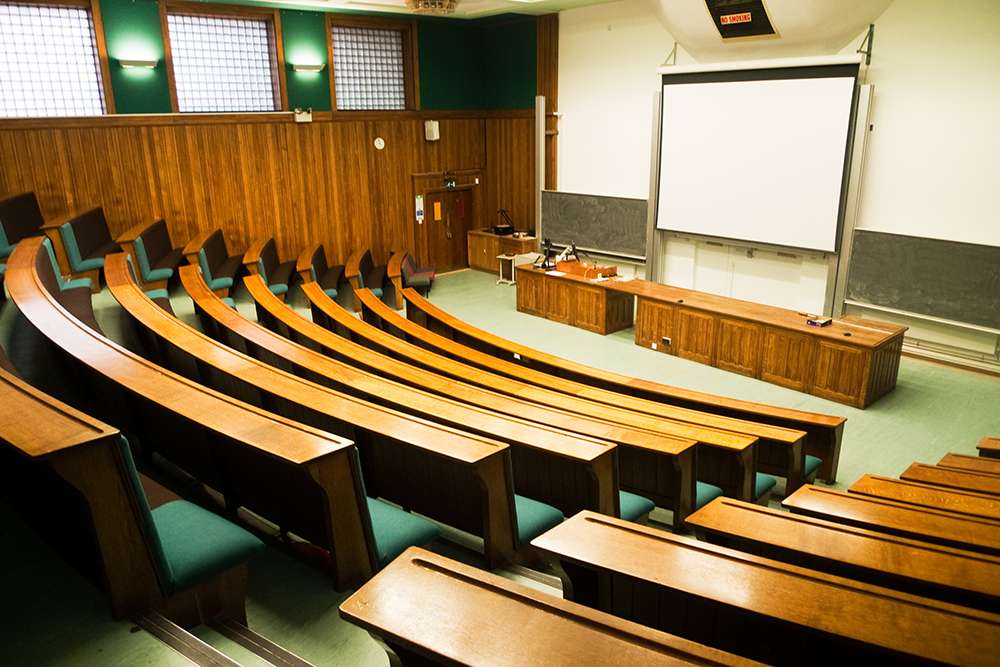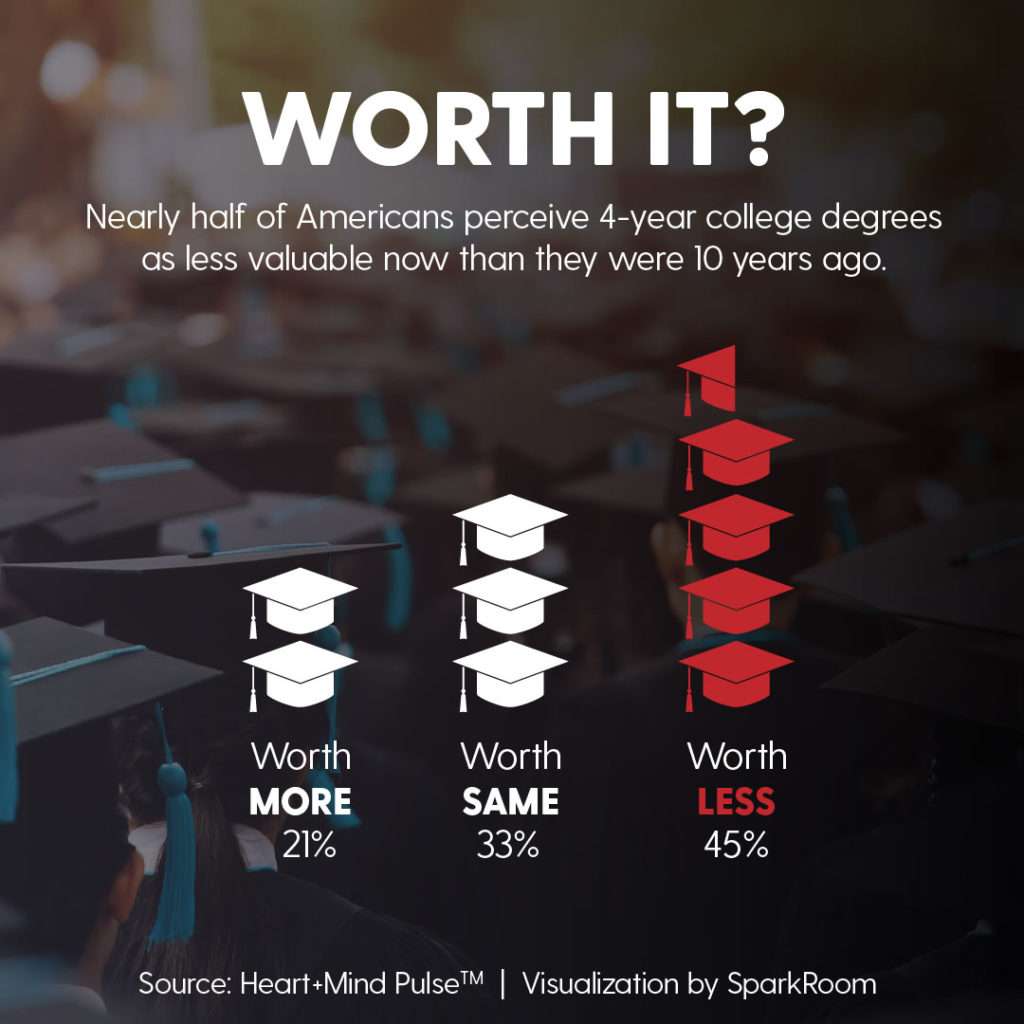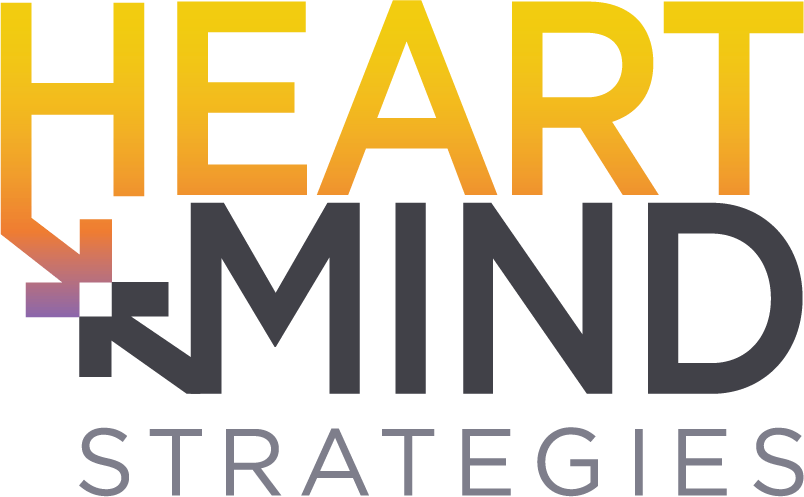By Erin Norman
Declining Birth-Rate
Earlier this month, the U.S. Census released figures from the 2020 Decennial Census showing a population growth rate of 7.4%. While that might sound impressive, it’s the 2nd lowest ten-year growth rate since the nation began recording such figures, saved from last place only by the Great Depression of the 1930s’ growth rate of 7.3%.
Under this high-level statistic is a complicated web of factors. Declining birth-rates play a large role. The most recent 2020 Census numbers have the total number of births per 1,000 women at just 1,637 – significantly below the replacement rate of 2,100.
There are a staggering number of implications to slow or negative population growth. Over the coming months, Heart+Mind will explore several of the areas expected to be impacted in the medium- to long-term due to the shifting population counts in the U.S.
Impact on Education
Our first look will be at higher education. Already reeling from the impacts of COVID and the perception that higher education is unaffordable, higher education has many challenges to face in the coming years. But even as the industry rises to meet those, it must continue to look longer-term to the significant likelihood of a shortage of students.

RELATED: 4 Strategies to Make Higher Education More Effective
Because other countries are tracking ahead of the United States on lower birth-rates and population decline, we have a good idea of what to expect. South Korea gives us a glimpse into the future of higher education once slowed population growth turns into decline. Many private universities, and especially lower ranked institutions outside of population centers, are facing closure. There are too many universities for the number of students who want to enroll squeezing already tight budgets. Government spending in the sector has decreased sharply as supply exceeds demand, further intensifying the financial crunch.
Back in the United States where birth-rates and population growth has not hit such extremes yet, those enrolling in higher education have had drastically different experiences than they anticipated. COVID-19 has completely reshaped the college experience. Many students who are back on campus (and many aren’t) are “deeply ambivalent” about their higher education experience. It is too early to tell if this is a pandemic blip or the beginning of a new trend where the college experience means less than it did to a previous generation.

Additionally, our March 2021 Heart+Mind Pulse survey found that 45% of Americans believe a college degree is worth less than it was 10 years ago. One-third say it is worth the same but that does not account for the fact that the cost of college at public institutions has nearly doubled in the last ten years. Furthermore, over one-third believe a skills or credential-based approach to education is better with that number rising to 44% among the middle class (income of $50-$100K per year). If the experience is less attractive and skills can be obtained elsewhere, what is the draw of a traditional higher education program?
RELATED: Four-Year College Degrees: Are They Still Relevant?
Looking to the Future of Higher Education
For decades, the higher education model in the United States has been built on the idea that there is an ever-growing number of students to serve. As we look 20 years into the future, that underlying premise does not hold. A declining birth-rate and resulting slow down in population growth threatens the sheer number of students to educate and many of those students are becoming disenchanted with the current higher education model that has lost luster during COVID, become increasingly expensive and is less focused on practical career and skills-based knowledge now easily accessible from other sources.
Colleges and universities must start planning now for the challenges ahead. The COVID-19 pandemic will subside, but the perceived value of a traditional degree and experience may have been permanently changed. The result is a reduced rate of enrollment from a smaller population. Institutions will need to compete aggressively for future students, show how and why they are unique from other choices and how they are meeting the specific needs of the modern student, keeping in mind the modern student may look very different from the traditional co-eds of the past.
About the Author

Erin Norman is a Senior Solutions Consultant at Heart+Mind Strategies focusing on policy issues, advocacy and non-profit marketing. She has experience directing political and ballot initiative polling at the local, state and federal level. Her expertise includes values-based communications, crisis communications, message testing, micro-targeting and predictive analytics.
Erin holds a Master’s in Public Policy from The College of William and Mary, with a focus on econometrics and quantitative methods, and a B.S. in Business Administration from Boston University.
